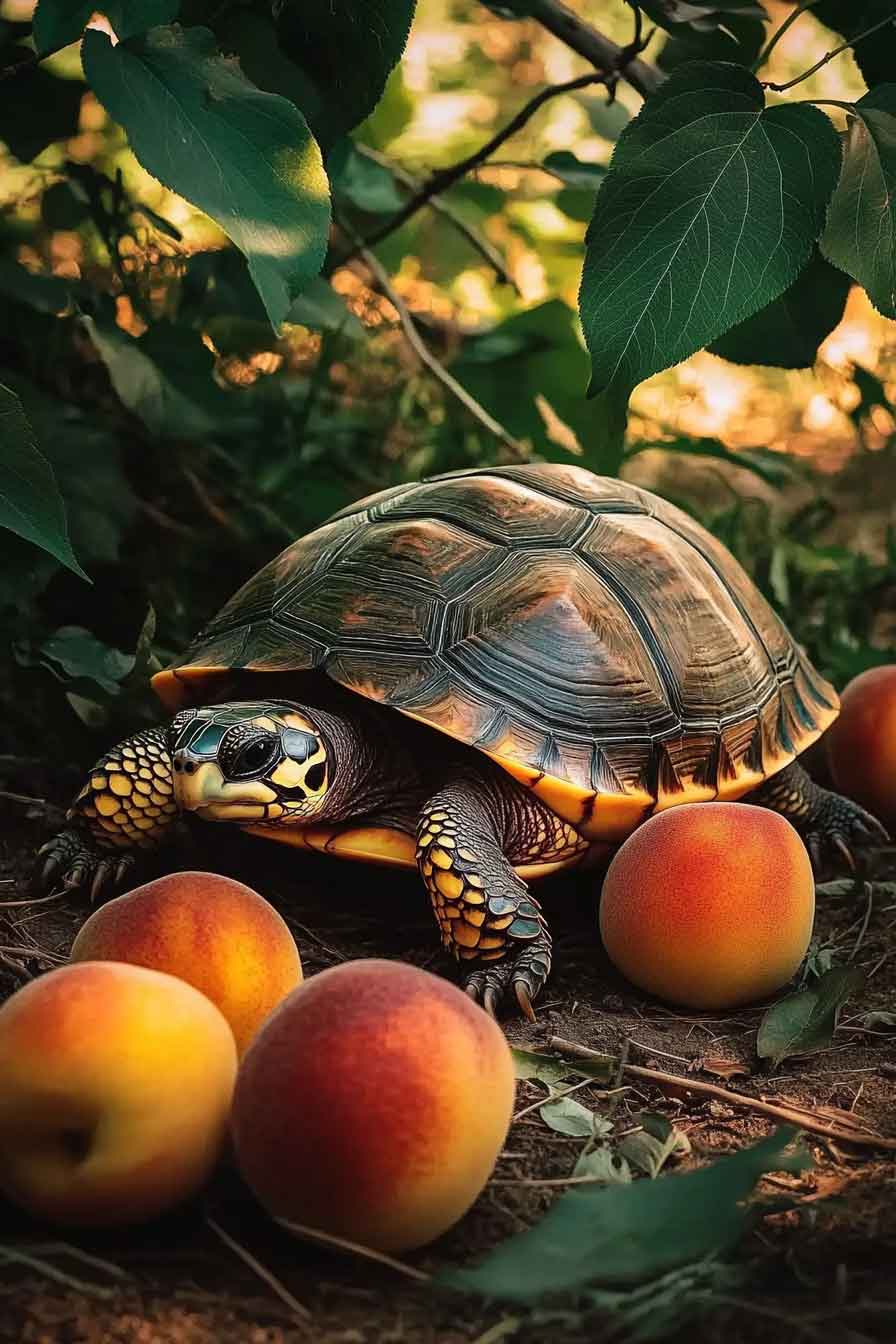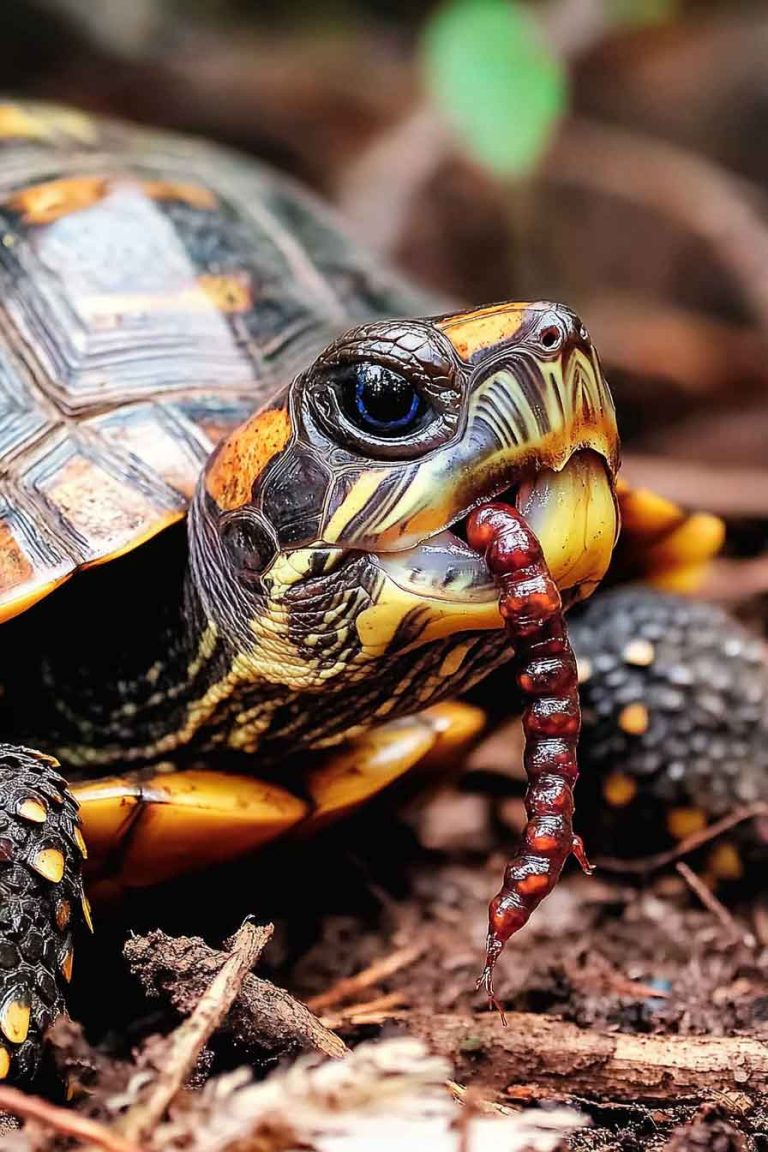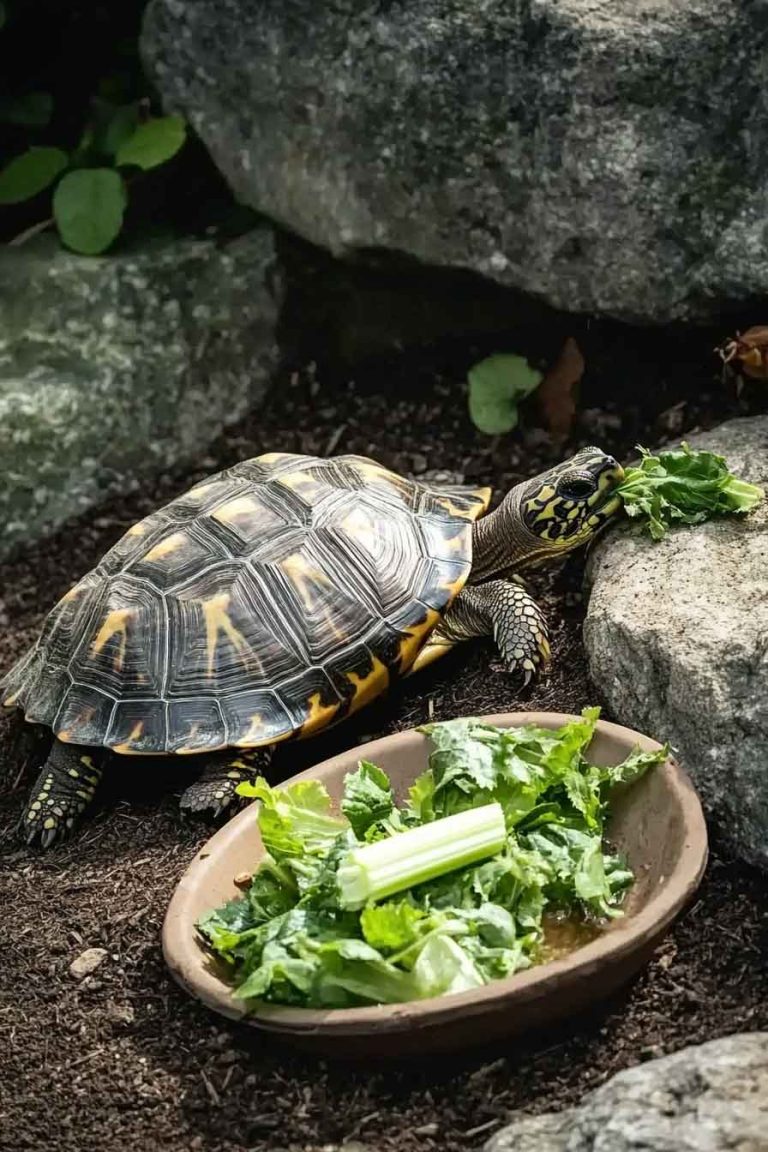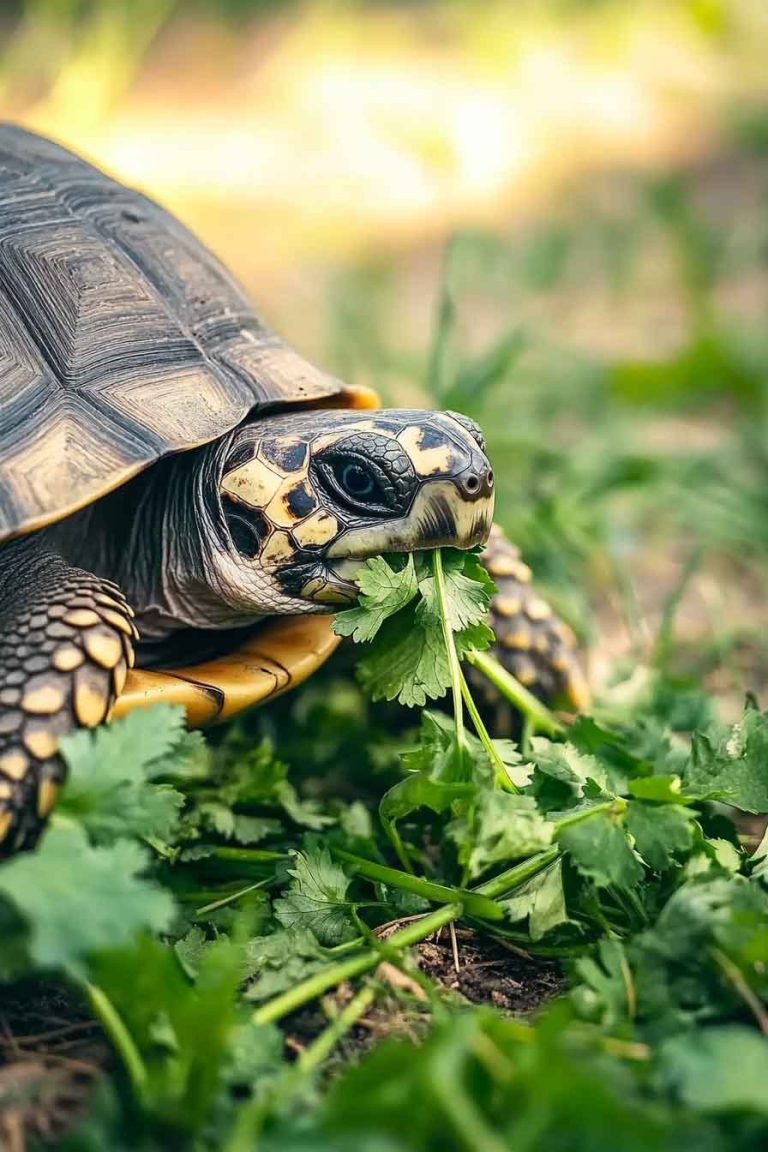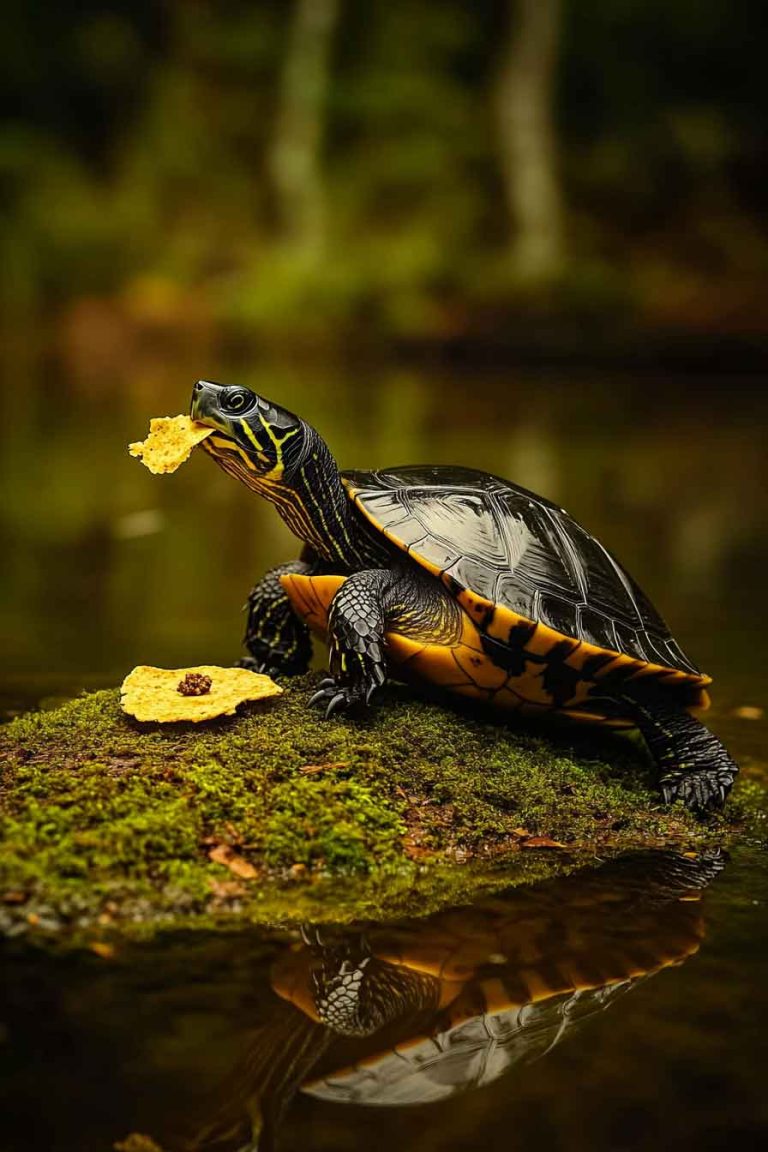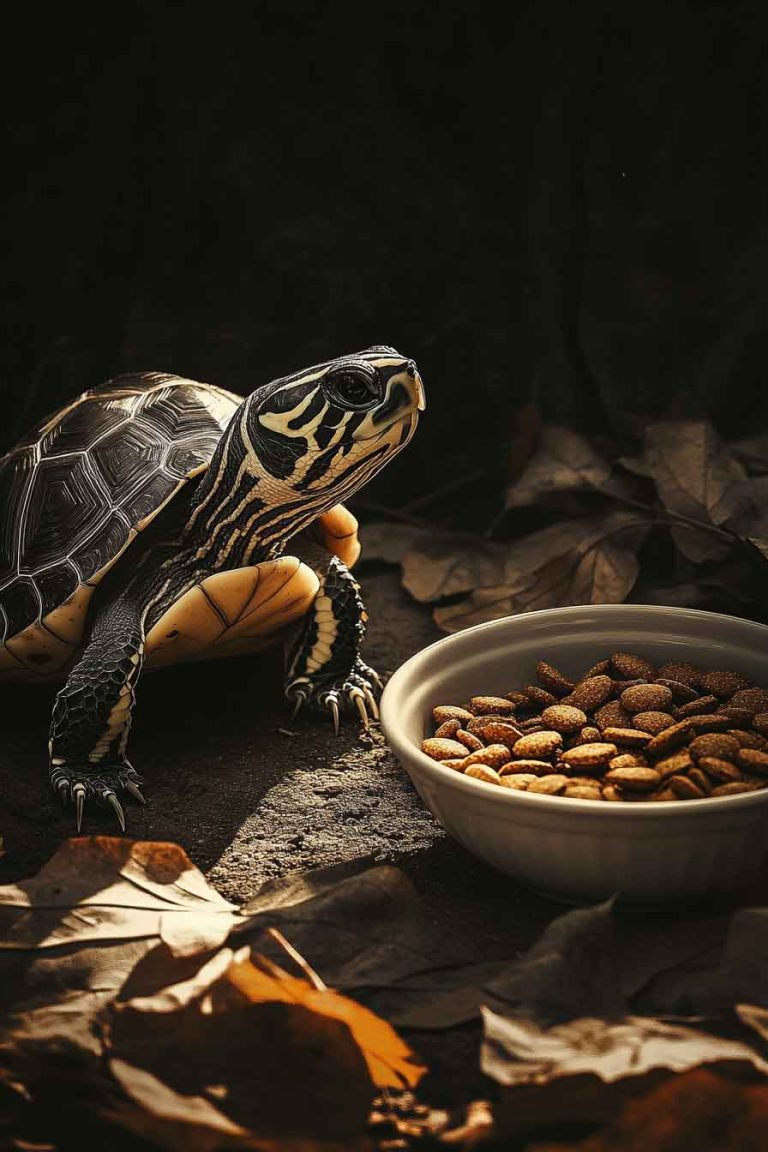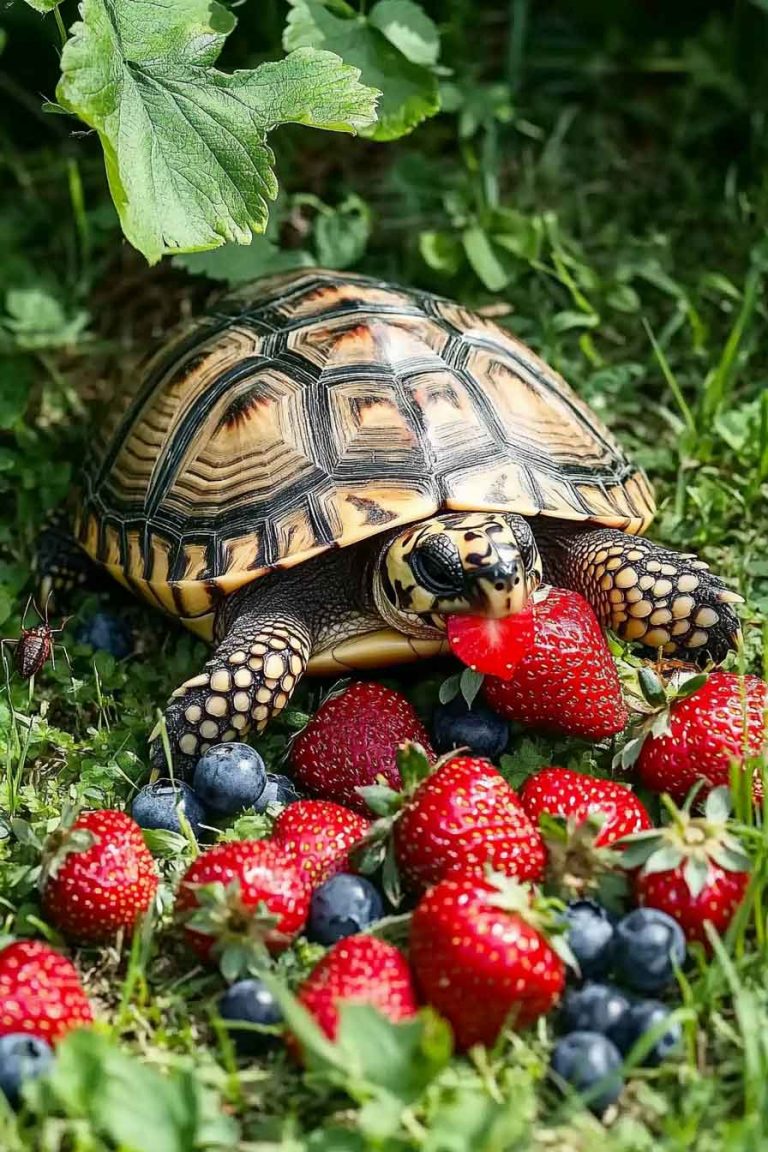Can Turtles Eat Peaches? Safe Feeding Guide for Pet Turtles
When I first started keeping turtles, I got curious about what fruits they could eat. One day, while snacking on a sweet peach, I thought, “Hmm, could I share just a little piece with my turtle?” If you’ve ever had that same thought — you’re not alone! So, can turtles eat peaches? Yes, they can…
When I first started keeping turtles, I got curious about what fruits they could eat. One day, while snacking on a sweet peach, I thought, “Hmm, could I share just a little piece with my turtle?” If you’ve ever had that same thought — you’re not alone!
So, can turtles eat peaches? Yes, they can — but only in moderation and not too often. Peaches are not toxic to turtles, but they do have a lot of natural sugar and a poor calcium-to-phosphorus ratio, which can cause problems over time if you’re not careful.
In this post, I’ll share everything I’ve learned about peaches and turtles — what nutrients peaches offer, the risks of feeding them too much, and how I safely give this fruit to my own turtles when I want to spoil them a little.
Can You Feed Peaches to Your Pet Turtle?
Yes — but only as an occasional treat, not a staple food.
When I first gave my turtle a small bite of peach, he was super excited. He snapped it up right away and seemed to enjoy the texture and sweetness. But after doing my research and talking to a reptile vet, I realized that just because turtles like something doesn’t always mean it’s safe in large amounts.
Peaches are high in sugar and low in calcium, which is a bad combo for turtles. While a bite or two once in a while won’t harm them, regular feeding can mess with their digestion, raise their blood sugar, and lead to nutritional imbalances — especially if peaches replace more important foods like leafy greens, insects, or turtle pellets.
That’s why I personally follow this rule: Only give peaches once every two to three weeks, and just in tiny pieces. I make sure it’s ripe, fresh, and cut into soft, bite-sized chunks with the skin peeled and pit removed.
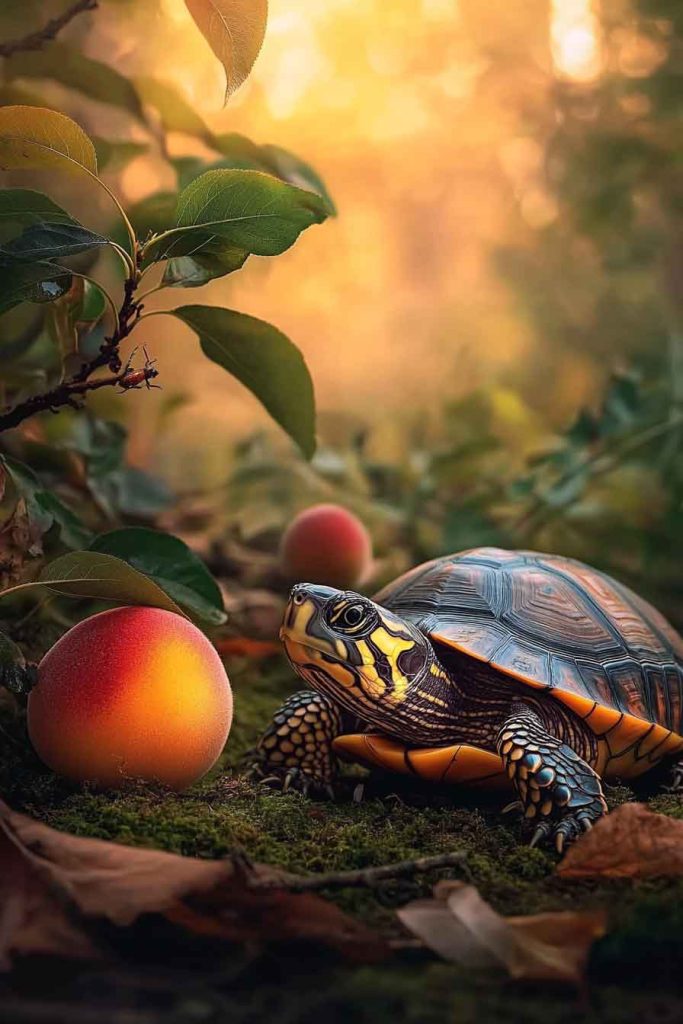
What’s Inside a Peach?
Let’s break down what’s actually in 100 grams of a raw peach:
- Calories: 39 kcal
- Carbohydrates: 9.5 g
- Sugars: 8.4 g
- Protein: 0.9 g
- Fat: 0.3 g
- Fiber: 1.5 g
- Calcium: 6 mg
- Phosphorus: 20 mg
- Vitamin C: 6.6 mg
- Vitamin A: 326 IU
- Potassium: 190 mg
Now here’s the problem: The calcium-to-phosphorus ratio is way off. Turtles need about twice as much calcium as phosphorus (a 2:1 ratio). But peaches flip that, with way more phosphorus than calcium. This means that the phosphorus can block the turtle’s ability to absorb calcium, which is crucial for healthy shell growth and bone development.
On top of that, the sugar content is very high for a reptile. Turtles don’t naturally eat sugary fruits in large amounts in the wild — especially aquatic species like red-eared sliders or painted turtles. Feeding too much fruit like peach can lead to digestive issues, fat buildup, and liver strain.
Do Turtles Even Like Peaches?
Yes — most turtles love them.
Peaches are juicy, soft, and sweet-smelling. The first time I offered a tiny slice to my turtle, he sniffed it for a second, then went right in. He even licked the juice off his beak after. It was kind of adorable.
But here’s what I learned the hard way — just because turtles like something doesn’t mean it’s good for them in large amounts. Just like kids would eat candy all day if we let them, turtles will often go for sweet fruits if they’re available.
That’s why I always keep fruit like peaches as an occasional treat, not a daily habit. My turtle may beg for more, but I’ve learned to say no — for his own good.
What Happens If a Turtle Eats Too Much Peach?
I once made the mistake of giving peach pieces two days in a row. My turtle seemed fine at first, but then I noticed a few things:
- He was less interested in leafy greens
- His stool got softer and smelled stronger
- He became a bit less active than usual
That’s when I realized I overdid it. I stopped giving fruit for a while and went back to a balanced mix of pellets, greens, and calcium-rich veggies.
Here’s why too much peach can be risky:
1. Digestive Trouble
Peaches are high in natural sugar and fiber. In small amounts, that’s fine — but too much can lead to bloating, diarrhea, or even constipation, depending on the turtle. Their gut isn’t built for sugar-heavy foods.
2. Calcium Deficiency Risk
As I mentioned earlier, peaches have more phosphorus than calcium. If this ratio is off too often, it can block the absorption of calcium. Over time, that may lead to Metabolic Bone Disease (MBD) — a serious condition where the turtle’s shell becomes soft, weak, or even deformed.
3. Liver and Kidney Stress
Too much sugar isn’t just bad for digestion — it also affects a turtle’s organs. High-fructose fruit like peaches can be hard on the liver and kidneys, especially in older turtles or those already on a poor diet.
That’s why I always stick to giving just one small slice of peach — peeled, chopped, and no skin or pit — once every couple of weeks.
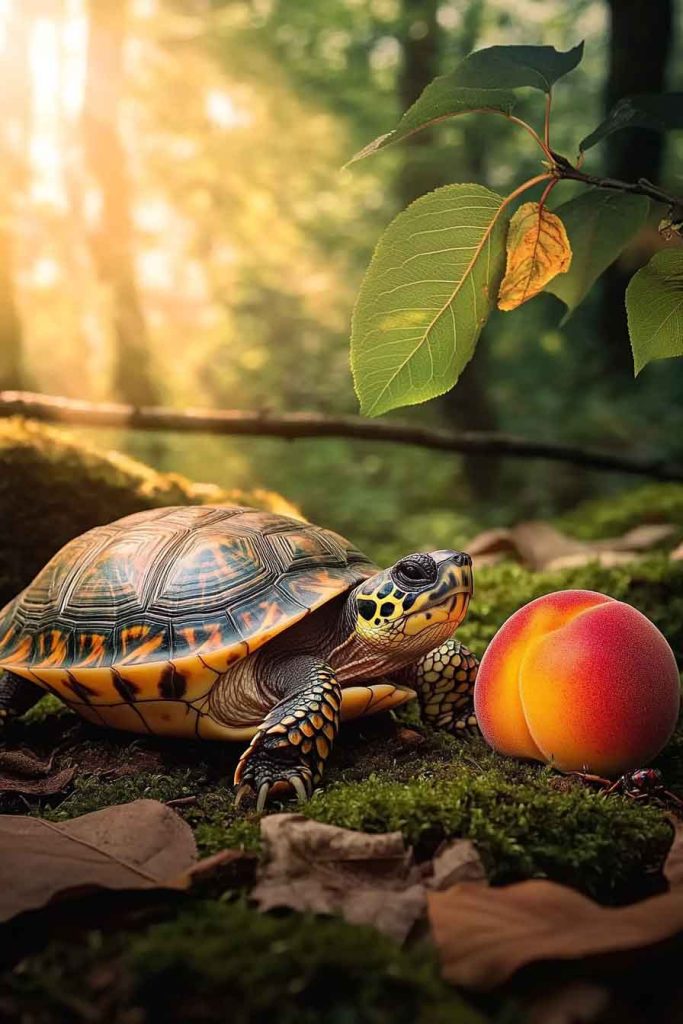
Can Baby Turtles Eat Peaches?
No — I don’t recommend it.
Baby turtles have different needs. They’re still growing, and their bodies are super sensitive. They need high calcium, protein, and vitamin D3 to support shell and bone development. Sugar and low-calcium foods like peaches don’t give them what they need — and might actually take away what they should be absorbing.
When I had baby turtles, I focused on:
- High-quality hatchling turtle pellets
- Cooked or freeze-dried insects
- Chopped dark leafy greens (like kale and dandelion)
- UVB lighting and calcium powder once or twice a week
Fruits like peaches? I waited until they were at least a year old — and even then, only as a rare treat.
How to Feed Peaches to Your Turtle (The Right Way)
If you’re going to treat your turtle to a peach, here’s how I do it safely:
- Choose a ripe peach.
It should be soft, juicy, and fresh. Avoid canned peaches — they often contain syrup and added sugar. - Wash it well.
I always rinse the peach under cool water to remove dirt or pesticides. - Peel the skin.
Turtle tummies can be sensitive to peach skin. I remove it just to be safe. - Remove the pit.
Never give the seed — it’s too hard and can be dangerous if swallowed. - Chop into tiny pieces.
I cut it into small, bite-sized chunks to make it easy to chew and swallow. - Feed just a little.
I give one or two tiny cubes — no more. Then I wait a few weeks before offering any fruit again.
And I always keep an eye on my turtle afterward to make sure there are no changes in appetite or behavior.
Frequently Asked Questions (FAQs)
Can Box Turtles Eat Peaches?
Yes — box turtles can eat peaches in small amounts. Since they are omnivores, fruit is a natural part of their diet. But just like with other turtles, moderation is key.
Can Red-Eared Sliders Eat Peaches?
Yes, they can. I’ve given mine a bite once in a while. But red-eared sliders need mostly greens and protein, so fruit should be very limited.
Can Painted Turtles Eat Peaches?
Painted turtles are similar to sliders — they can eat a tiny piece of peach as a treat, but it shouldn’t be a regular thing.
Can Tortoises Eat Peaches?
Some tortoises can have fruit in their diet, depending on the species. But many tortoises do better with low-sugar greens and grasses. I’d always check with a vet before feeding fruit like peaches to a tortoise.
Conclusion
So, can turtles eat peaches?
Yes — but just a little, and only sometimes.
Peaches are not toxic, but they’re not the healthiest snack either. Too much can lead to sugar overload, calcium imbalance, and even shell problems over time.
Personally, I only give my turtle a small piece of peach every few weeks. It’s a fun treat — but not part of his regular diet. If you do the same, your turtle can enjoy a happy, healthy life with the occasional sweet bite.
Hope this helped! If your turtle has tried peaches before, I’d love to hear how it went — drop a comment and let me know!

